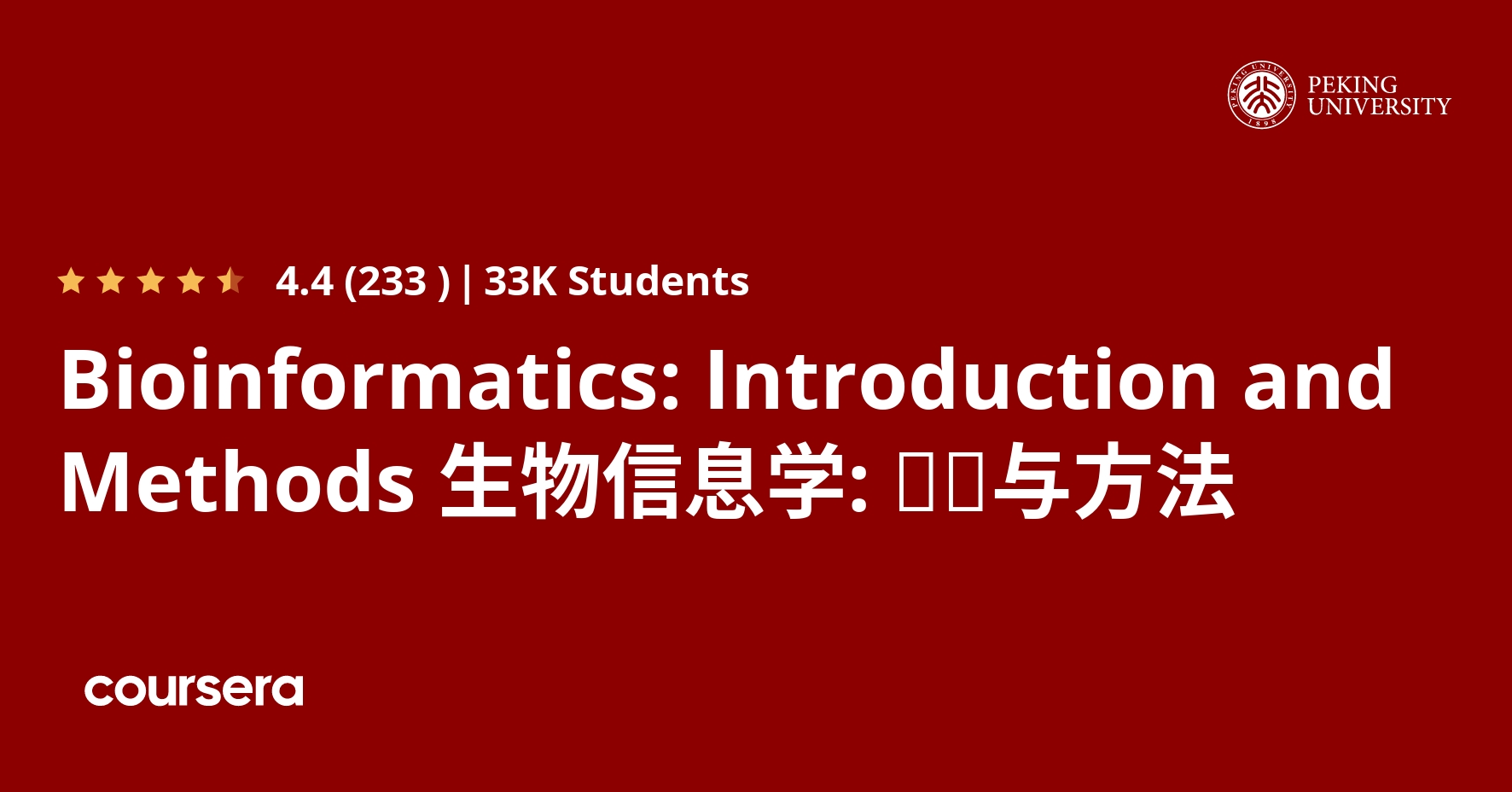Description
A big welcome to “Bioinformatics: Introduction and Methods” from Peking University! In this MOOC you will become familiar with the concepts and computational methods in the exciting interdisciplinary field of bioinformatics and their applications in biology, the knowledge and skills in bioinformatics you acquired will help you in your future study and research.
Course materials are available under the CC BY-NC-SA License.
What you will learn
Introduction and History of Bioinformatics
Welcome to “Bioinformatics: Introduction and Methods! Upon completion of this module you will be able to: become familiar with the essential concepts of bioinformatics; explore the history of this young area; experience how rapidly bioinformatics is growing. Our supplementary materials will give you a better understanding of the course lectures through they are not required in quizzes or exams
Sequence Alignment
Upon completion of this module, you will be able to: describe dynamic programming based sequence alignment algorithms; differentiate between the Needleman-Wunsch algorithm for global alignment and the Smith-Waterman algorithm for local alignment; examine the principles behind gap penalty and time complexity calculation which is crucial for you to apply current bioinformatic tools in your research; experience the discovery of Smith-Waterman algorithm with Dr. Michael Waterman himself.
Sequence Database Search
Upon completion of this module, you will be able to: become familiar with sequence databse search and most common databases; explore the algoritm behind BLAST and the evaluation of BLAST results; ajdust BLAST parameters base on your own research project.
Markov Model
Upon completion of this module, you will be able to: recognize state transitions, Markov chain and Markov models; create a hidden Markov model by yourself; make predictuions in a real biological problem with hidden Markov model.







